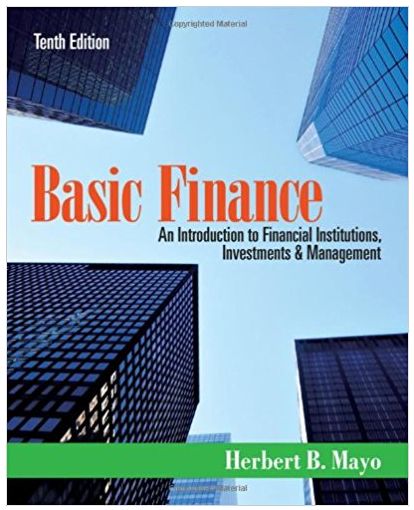Answered step by step
Verified Expert Solution
Question
1 Approved Answer
You've just been introduced to the Black - Scholes option pricing model and want to give it a try, and would like to use it
You've just been introduced to the BlackScholes option pricing model and want to give it a try, and would like to use it to calculate the value of a call option on TriHawk stock. Currently, TriHawk's common stock is selling for
$ $
per share, and the call option you are considering has an exercise or strike price of
$ $
with a maturity of days or
year. In addition, you have calculated theannualized variance in its stock returns to be
If the annual riskfree rate of interest is
percent what would the value of this call option be How would your answer change if there was only one month left to expiration, but everything else remained the same? Now, what would happen to the value of this call option if the annualized variance in stock returns was
rather than
Question content area bottom
Part
aThe value of the call option with an exercise price of
$ $
is
$enter your response here.
Round to the nearest cent.
Part
bThe value of the call option with one month left to expiration, but everything else remaining the same is
$enter your response here.
Round to the nearest cent.
Part
cUsing the original assumptions from above, the value of the call option with a variance of
is
$enter your response here.
Round to the nearest cent.
Part
Why did the value of the call option increase when compared to part a above?Select the best choice below.
A
When volatility increases, the potential to make money on the option is greater because the risk is less. For this reason, investors are willing to pay more for options on more volatile stocks.
B
When volatility increases, the potential to make money on the option is greater because there is an increase in the upside potential; however, you can still lose no more than the price of the option. For this reason, investors are willing to pay more for options on more volatile stocks.
C
When volatility increases, the potential to make money on the option is less because the risk is greater. For this reason, investors are willing to pay more for options on more volatile stocks.
D
When volatility decreases, the potential to make money on the option is less because the risk is greater. For this reason, investors are willing to pay more for options on more volatile stocks.
The value of the call option with an exercise price of @CURR is $Round to the nearest cent.The value of the call option with one month left to expiration, but everything else remaining the same is $Round to the nearest cent.Using the original assumptions from above, the value of the call option with a variance of is $Round to the nearest cent.
Step by Step Solution
There are 3 Steps involved in it
Step: 1

Get Instant Access to Expert-Tailored Solutions
See step-by-step solutions with expert insights and AI powered tools for academic success
Step: 2

Step: 3

Ace Your Homework with AI
Get the answers you need in no time with our AI-driven, step-by-step assistance
Get Started


